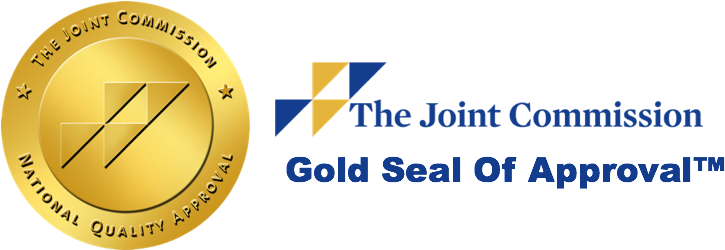Statistics show that our national mental health is teetering on the brink of collapse, and unless drastic measures are taken soon, it may never recover. For example, the National Alliance on Mental Illness (NAMI) reports suicide rates for young people in America have risen by about 20% over the past five years. During this same period, more than 45,000 suicides were happening annually among those aged 10 to 34.
National Suicide Prevention Hotline
A suicide hotline is the primary resource for individuals at risk for suicide. They provide a confidential and anonymous service that allows people to discuss their feelings and experiences without judgment.
The National Suicide Prevention Lifeline is a telephone helpline service that offers to counsel people in need. The Lifeline reported receiving almost 2 million calls last year alone. The National Suicide Prevention Lifeline is a safety net for people in crisis. It provides them with a listening ear and a person they can confide in. The presence of an empathetic ear often makes the difference between life-saving intervention or death or withdrawal from society.
Efficacy of Lifeline
It is estimated that only 17% of the Lifeline callers got through, and most calls were abandoned before getting any help or support. This is due to limited capacity and ever-increasing demand. The suicide rate has increased significantly, and we must provide these programs with more resources so they can help people considering suicide.
Rise of 988
Currently, the Lifeline crisis line is answered by a group of national networks of more than 180 call centers, often nonprofits. Many rely on paid counselors and volunteers to juggle hotlines in an ever-changing landscape that requires funding for salaries or specific programs. The majority of these programs run on shoestring budgets without any assistance from their state.
Effective July 16, 2022, Lifeline will be using the designated three-digit code 988 instead of 1-800-273-TALK (8255). Crisis services are available through a nationwide network that can provide you with confidential support if needed. This is targeted at individuals with suicidal ideation with or without a plan.

Now, if someone is in emotional distress or experiencing suicidal thoughts, they have two options: calling 911 for immediate assistance or reaching out to reach your local suicide prevention hotline by dialing 988.
The goal of 988 is to answer 95% or more calls within 20 seconds. This data analysis showed that only two states had Lifeline answering rates above this percentage in the last quarter, with 33 others abandoning more than 15% of calls.
Funding 988
The Lifeline is coming under new management when mental health concerns are growing due to the pandemic, including what the U.S. surgeon general has warned could be considered an emergency among young people who commit suicide with a frequency reaching 45,000 per year.
The suicide prevention hotline 988 is getting a grant from the federal government with new funding to help hire more counselors and build backup centers. The goal is to improve suicide prevention efforts nationwide.
The new federal grants are helping suicide prevention centers across the country to hire more counselors. However, the worker shortage is a significant problem, with few qualified candidates to fill the positions. As a result, many centers are struggling to keep up with demand.
Backup suicide prevention centers are also getting new funding with money to help build capacity. These centers provide vital services for people in crisis, and the additional funding will help them expand their reach. However, it is unclear how effective they will be without more counselors to staff them.
Limitations
In the United States, suicide is a leading cause of death. Each year, suicide kills more people than homicide. The problem is only getting worse. From 1999 to 2014, the suicide rate in the U.S. increased by 24%. Suicide does not discriminate; it affects people of all ages, genders, and races. It is a serious problem that requires urgent action.
In the United States, the main suicide prevention strategy is to provide people with referrals to mental health professionals or suicide prevention hotlines. While this can be helpful, it is not enough. Studies have shown that suicide hotline callers are no less likely to attempt suicide than those who do not receive referrals.
The new suicide prevention hotline 988 could be a vital service for people in crisis, and the new funding will help improve its effectiveness. However, the worker shortage is a significant obstacle that must be addressed to enhance suicide prevention efforts nationwide. An additional shortcoming is that once an individual has been identified as in need, there’s often not enough coordination between healthcare providers, agencies, and treatment centers to provide care.
Another issue is that even if individuals get referred, the treatments for suicidality are not that effective. The effectiveness of antidepressants, for example, is limited. SSRIs (selective serotonin reuptake inhibitors), the most commonly prescribed antidepressant, have an efficacy rate of only 33%. In other words, they work for one-third of the people who take them. For the other two-thirds, SSRIs either don’t work or cause adverse side effects.
To address the rising issue of suicide prevention in the United States, we need robust staffing and integrated referral processes. Finally, mental health professionals must be trained more thoroughly on assessment and timely interventions.
Suicide Help From the Phoenix Recovery Center
Suicide rates have been on the rise in recent years, and suicide prevention hotlines have come under increased scrutiny as the first line of defense for suicide prevention. In addition, many suicide prevention hotlines are not equipped with effective treatments for suicidality. As a result, suicide prevention hotlines have been largely ineffective in reducing suicide rates. In response to the low rates of efficacy, The National Suicide Prevention Lifeline has created 988, a new suicide prevention hotline with a chat option. This federally funded program has the potential to save many lives, but many have argued that it is not staff or trained to properly handle callers. Another option is residential or outpatient treatment. You are not alone and help is available. If you or someone you know is struggling with thoughts of suicide, call The Phoenix Recovery Center today at (801) 438-3185.







